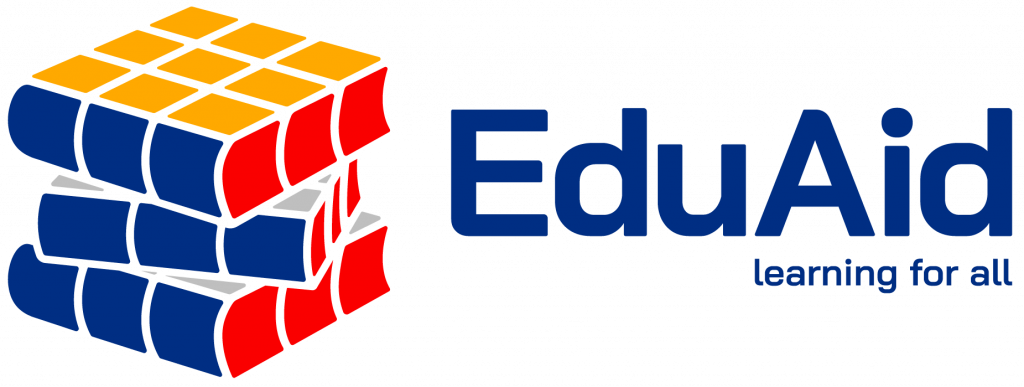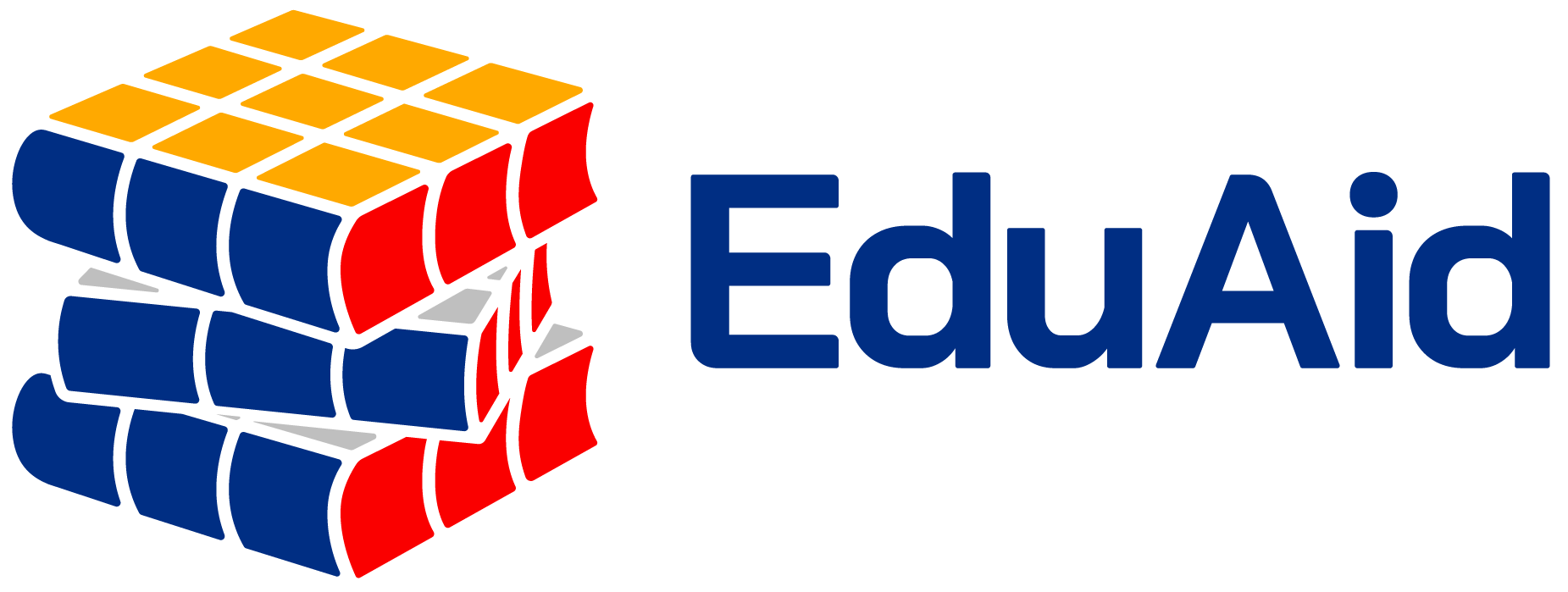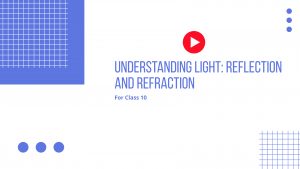NCERT Solutions for Science Class 10 Chapter 10
NCERT Solutions for class 10 science chapter 10 “Light Reflection and Refrection”, is curated by senior and experienced teachers of EduAid. Before answering the questions of Chapter 10 , this chapter, such as the power of accommodation, defects of vision, refraction of light, Atmospheric refraction, scattering of light, etc.
Here are the answers of the questions included in the NCERT book. Before diving deep into the answers, try to attempt the questions by yourself.
Answer the Following Questions”
1. Define the principle focus of a concave mirror.
Solution : Principal focus of a concave mirror is the point on its principal axis, where light rays coming parallel to principal axis actually converge after reflection from mirror.
2. The radius of curvature of a spherical mirror is \(20\space cm\). what is its focal length?
Solution : Focal length \((f)= \frac{R}{2} = \frac{20\space cm}{2} = 10\space cm.\)
3. Name a mirror that can give an erect and enlarged image of an object.
Solution : Only a concave mirror can give a erect and enlarged image of an object.
4. Why do we prefer a convex mirror as a rear-view mirror in vehicles?
Solution : We prefer a convex mirror as a rear-view mirror in vehicles because a convex mirror gives an erect and diminished image. As a result, convex mirror help the driver to have much wider field view.
5. Find the focal length of a convex mirror whose radius of curvature is \(32\space cm\).
Solution :
Radius of curvature of \((R) = 32\space cm\)
Focal length \((f) = \frac{R}{2} = \frac{32}{2} cm = 16 \space cm\).
6. A concave mirror produces three times magnified real image of an object placed at \(10\space cm\) in front of it. Where is the image located?
Solution :
Distance of object from concave mirror \((u)= -10\space cm\).
Magnification \((m) = -3\)
\(m = -\frac{v}{u}\)
\(v = -mu = -(3) \times (-10) = -30\space cm\).
7. A ray of light traveling in air enters obliquely into water. Does the light ray bend towards or away from the normal? Why?
Solution :
The light bends towards the normal on entry into water. It is due to the fact that as compared to air, the water is optically denser medium.
8. Light enters from air to glass having refractive index \(1.50\). What is the speed of light in glass? The speed of light in vacuum is \(3\times 10^8\space m/s\).
Solution :
Speed of light in vacuum \((c) = 3 \times 10^8\space m/s\).
Refractive index \(= \frac{c}{v}\).
Speed of light in glass \(= \frac{3 \times 10^8\space m/s}{1.50}\)
\(= 2 \times 10^8\space m/s\)
9. Find out, from Table \((10.3)\), the medium having highest optical density. Also, find the medium with lowest optical density.
Solution :
As per table, diamond has highest optical density \((2.42)\). Medium with lowest optical density is air \((1.0003)\)
10. You are given kerosene, turpentine and water. In which of these does the light travel fastest? Use the information given in table \(10.3\)
Solution :
As the refractive index of water is least out of three substances, hence speed of light is maximum in water. So, light travels fastest in water.
11. The refractive index of diamond is \(2.42\). What is the meaning of this statement?
Solution :
It means that speed of light in diamond is \(2.42\) times slower than speed of light in air.
12. Define \(1\) dioptre of power of lens.
Solution :
One dioptre of is defined as the power of lens having a focal length of \(1\space m\).
13. A convex lens forms a real and inverted image of a needle at distance of \(50\space cm\). from it. Where is the needle placed in front of the convex lens if the image is equal to the size of objects? Also, find the power of lens.
Solution :
Image distance \((v) = +50\space cm,\space h_i = h_0\)
\(\frac{h_i}{h_o} = \frac{v}{u}\)
\(u=\frac{v\times h_0}{h_i}\)
\(=\frac{50\times h_0}{h_i}\)
\(= 50\space cm\).
Now,
\(u = -50\space cm\)
\(v = + 50\space cm\).
\(f = ?\)
\(\frac{1}{f} = \frac{1}{v} –\frac{ 1}{u}\)
\(\frac{1}{f} =\frac{ 1}{50} +\frac{ 1}{50}\)
\(f = + 25\space cm. = 0.25\space m\)
Power of lens \((P) =\frac{1}{f}\)
\(=\frac{1}{0.25} = + 4D\).
14. Find the power of a concave lens of focal length \(2\space m\).
Solution :
Focal length of concave lens \(= – 2\space m\).
\(P =frac{1}{f} =\frac{ 1}{(-2m)}\)
\(= -0.5\space D\)
15. Which one of the following materials cannot be used to make a lens?
(a) Water
(b) Glass
(c) Plastic
(d) Clay
Solution : (d) Clay
16. The image formed by a concave mirror is observed to be virtual, erect and larger than the object. Where should be the position of the object?
(a) Between the principal focus and the centre of curvature.
(b) At the centre of curvature
(c) Beyond the centre of curvature
(d) Between the pole of the mirror and its principal focus.
Solution : (d) Between the pole of the mirror and its principal focus.
17. Where should an object be placed in front of convex lens to get a real image of the size of the object?
(a) At the principal focus of the lens.
(b) At twice the focal length
(c) At infinity
(d) Between the optical centre of the lens and its principal focus.
Solution : (b) At twice the focal length.
18. A spherical mirror and thin spherical lens have each of focal length of \(-15\space cm\). the mirror and lens are likely to be
(a) Both concave
(b) Both convex
(c) The mirror is concave and the lens is convex
(d) The mirror is convex and lens is concave.
Solution : (a) both concave.
19. No matter how far you stand from a mirror, your image appears erect. The mirror is likely to be
(a) Plane
(b) Concave
(c) Convex
(d) Either concave or convex.
Solution : (d) either plane or convex
20. Which of the following lens would you prefer to use while reading small letters found in a dictionary?
(a) A convex lens of focal length \(50\space cm\)
(b) A concave lens of focal length \(50\space cm\)
(c) A convex lens of focal length \(5\space cm\)
(d) A concave lens of focal length \(5\space cm\)
Solution : (c) A convex lens of focal length \(5\space cm\).
21. We wish to obtain an erect image of an object, using a concave mirror of focal length \(15\space cm\). What should be the range of distance of the object from mirror? What is the nature of image? Is the image larger or smaller than the object? Draw a ray diagram to show the image formation in this case.
Solution : Object must be placed in front of concave mirror between its pole and principal focus at a distance less than \(15\space cm\). The image formed will be virtual and erect. The size of the image is larger the object. The ray diagram is as follows:
22. Name the type of mirror used in the following situations:
(a) Headlights of a car
(b) Side/rear-view mirror of a vehicle.
(c) Solar furnace.
Support your answer with reason.
Solution :
(a) Headlights of a car- concave mirror to give parallel beam of light after reflection from concave mirror.
(b) Side/rear-view mirror of vehicle- convex mirror as it forms virtual erect and diminished image to give wider view field.
(c) Solar furnace- concave mirror to concentrate sunlight to produce heat in solar furnace.
23. One-half of a convex lens is covered with a black paper. Will this lens produce a complete image of the object? Verify your answers experimentally. Explain your observations.
Solution : When one-half of a convex lens is covered with a black paper, this lens produces a complete image of the object. To prove it we perform experiment:
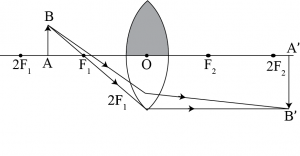
When another-half of a convex lens is covered with a black paper
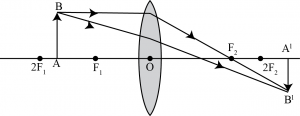
Take a concave mirror and cover half part of its by using black paper. Place it vertically in a stand. On one side of it place a burning candle. On opposite side of the lens fix a white screen. Adjust the position of candle or screen till clear image of burning candle is formed on the screen. We observe that the image is complete image of the object. From the experimental observations, we find that image formation does not depend upon the size of a lens. A similar lens can also form complete image of an object placed in front of it. However, brightness of the image decreases when some part of lens is blocked. It is because now lesser number of rays pass through the lens.
24. An object 5 cm in length is held 25 cm away from a converging lens of focal length 10 cm. Draw the ray diagram and find the position, size and the nature of the image formed.
Solution :
Height of the object, \(h_0=5\space cm\)
Distance of the object from converging lens, \(u=-25\space cm\)
Focal length of converging lens, \(f=10\space cm\)
Using lens formula,
\(\frac{1}{u}-\frac{1}{u}=\frac{1}{f}\)
\(\frac{1}{v}=\frac{1}{f}+\frac{1}{u}=\frac{1}{10}-\frac{1}{25}=\frac{15}{250}\)
\(v=\frac{250}{15}=16.66\space cm\)
Also, for a converging lens, \(\frac{h_i}{h_0}=\frac{v}{u}\)
\(h_1=\frac{v}{u}\times_0\frac{50×5}{3x(-25)}=\frac{10}{-3}=-3.3\space cm\)
Thus, the image is inverted and formed at a distance of \(16.7\space cm\) behind the lens and measures \(3.3\space cm\). The ray diagram is shown below.
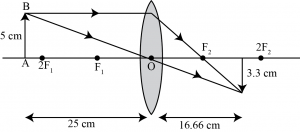
25. A concave lens of focal length \(15\space cm\) forms an image \(10\space cm\) from the lens. How far is the object placed from the lens? Draw the ray diagram.
Solution :
\(f= -15\space cm,\space v= -10\space cm\)
\(\frac{1}{v} -\frac{1}{u} =\frac{1}{f}\)
\(\frac{1}{u} =\frac{ 1}{15} –\frac{ 1}{10} = -\frac{1}{30}\)
\(u = -30\space cm\).
Ray diagram as follows:
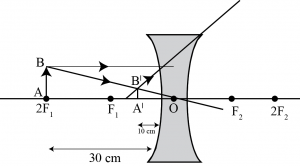
26. An object is placed at a distance of \(10\space cm\) from a convex mirror of focal length \(15\space cm\). Find the position and nature of image.
Solution :
\(f = +15\space cm,\space u = -10\space cm\).
\(frac{1}{f} =\frac{1}{v} +\frac{1}{u}\)
\(\frac{1}{v} =\frac{1}{15} +\frac{1}{10}\)
\(\frac{1}{v} =\frac{5}{30}\)
\(v = + 30\space cm\).
The image is formed \(6\space cm\) behind the mirror, it is a virtual and erect image.
27. The magnification produced by a plane mirror is \(+1\). What does this means?
Solution :
\(m=\frac{h_i}{h_0}=\frac{v}{u}\)
Magnification produced by a plane mirror is \(+1\) which means that size of image formed is exactly equal to size of object behind the mirror.
28. An object \(5.0\space cm\) in length is placed at a distance of \(20\space cm\) in front of a convex mirror of radius of curvature \(30\space cm\). Find the position of the image, its nature and size.
Solution :
Radius of curvature \((R) = 30\space cm\)
\(f =\frac{ R}{2} =\frac{ 30}{2} = 15\space cm\)
\(u = –20\space cm,\space h= 5\space cm\).
\(\frac{1}{v} +\frac{1}{u} =\frac{1}{f}\)
\(\frac{1}{v} =\frac{ 1}{15}+\frac{1}{20} =\frac{7}{60}\)
\(v =\frac{60}{7} = 8.6\space cm\).
image is virtual and erect and formed behind the mirror.
\(\frac{h_i}{h_0}=\frac{v}{u}\)
\(\frac{h_i}{5}=\frac{8.6}{20}\)
\(h_i = 2.2\space cm\).
Size of image is \(2.2\space cm\).
29. An object of size \(7.0\space cm\) is placed at \(27\space cm\) in front of a concave mirror of focal length \(18\space cm\). At what distance from the mirror should a screen be placed, so that a sharp focused image can be obtained? Find the size and the nature of the image.
Solution :
\(u = – 27\space cm,\space f = – 18\space cm.\space h_0= 7.0\space cm\)
\(\frac{1}{v} =\frac{ 1}{f}- \frac{1}{u}\)
\(\frac{1}{v} = -\frac{1}{18} + \frac{1}{27} = -\frac{1}{54}\)
\(V = – 54\space cm\).
Screen must be placed at a distance of \(54\space cm\) from the mirror in front of it.
\(\frac{h_i}{h_0}=\frac{v}{u}\)
\(\frac{h_i}{h_0}=\frac{v}{u}\)
\(\frac{h_i}{7}= \frac{+54}{-27}\)
\(h_i=-2\times7=-14\space cm\)
Thus, the image is of \(14\space cm\) length and is inverted image.
30. Find the focal length of a lens of power \(-2.0\space D\). What type of lens is this?
Solution :
Power of lens \((P) = -2.0\space D\)
\(P = \frac{1}{f}\space or\space f = \frac{1}{m}\)
\(f =\frac{1}{-2.0} = -0.5\space m\).
\((-ve)\) sign of focal length means that the lens is concave lens.
31. A doctor has prescribed a corrective lens of power \(+1.5\space D\). Find the focal length of the lens. Is the prescribed lens diverging or converging?
Solution :
\(P = +1.5\space D\)
\(f =\frac{1}{P} =\frac{1}{+1.5} = 0.67\space m\).
As the power of lens is \((+ve)\), the lens is converging lens.
Study materials
- Refernce Books
- NCERT Solutions
- Syllabus
